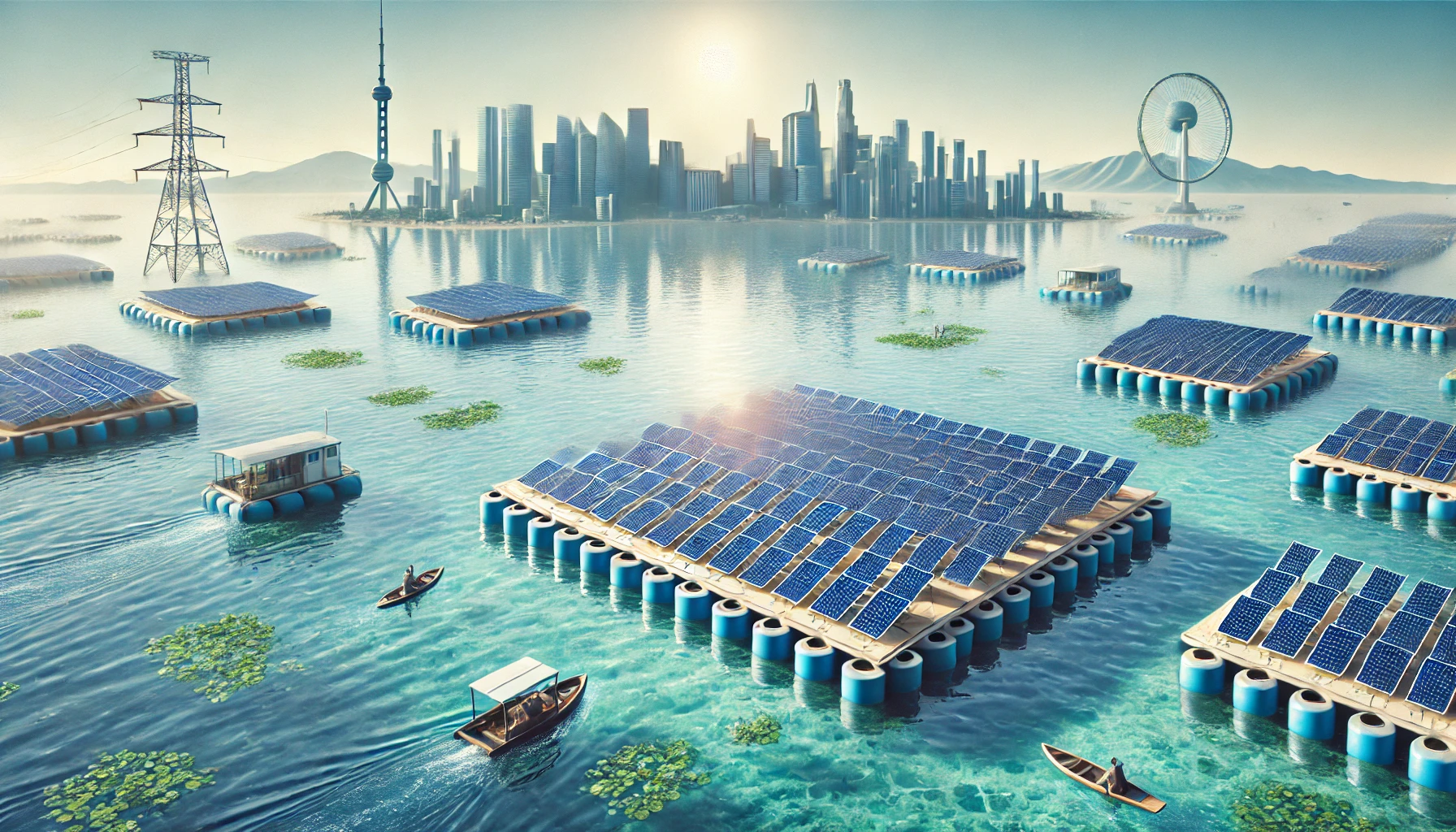Floating Solar Farms: How Solar Panels on Water Are Transforming the Clean Energy Landscape

Introduction to Floating Solar Farms
Imagine solar panels gliding across a lake like oversized lily pads, soaking up the sun and generating electricity. Sounds futuristic, right? Well, floating solar farms are here, and they’re making waves—literally—in the renewable energy world. As countries face the challenge of finding enough land to install vast solar fields, they’re increasingly turning to water bodies to solve the problem. Whether it's reservoirs, lakes, or even oceans, these floating solar farms are a brilliant solution to harness clean energy without eating up precious land. But what exactly are they, and how are they helping countries with limited space like Japan, Singapore, and the Netherlands? Let’s dive in.
The Tech Behind Floating Solar Panels
So how do these magical water-floating solar panels work? It's pretty much what you'd expect—a solar power system sitting on platforms that float on water. These panels are tethered to ensure they don't float away (which would be awkward), and they’re designed to withstand the elements. Floating solar farms can produce energy just as efficiently as their land-based cousins. In fact, the water can help keep the panels cool, boosting their efficiency and prolonging their lifespan. Who knew solar panels needed a refreshing dip? This setup not only avoids taking up valuable land but also reduces water evaporation and creates a cooling effect, which is particularly useful in hot climates.
Japan: A Pioneer in Floating Solar
Japan, always ahead of the curve when it comes to technology, has embraced floating solar farms with open arms. With limited land space and a strong desire to go green, Japan turned to its reservoirs and lakes to deploy these floating solar systems. One of the most famous projects is the Yamakura Dam reservoir, which hosts one of the world's largest floating solar farms. This project, consisting of over 50,000 solar panels, provides enough energy to power nearly 5,000 households annually. It's like a solar-powered superhero saving the day, one panel at a time. Japan’s success with floating solar has inspired other countries to explore this innovative solution.
Singapore: Solar Power on a Sunny Island
As a small island nation with limited land, Singapore faced a tough challenge—how do you go solar when you don’t have much space for solar panels? Enter floating solar farms. Singapore built one of the world’s largest inland floating solar farms on the Tengeh Reservoir, a massive project designed to provide clean energy to the city-state while preserving its precious land area. The farm produces enough energy to power five water treatment plants, a significant achievement for a country that relies heavily on imported energy. Singapore's sunny weather is a perfect match for floating solar panels, which bask in the tropical sun all year round. Talk about making the best of what you’ve got!
The Netherlands: A Floating Solution for a Water-Rich Country
If there’s one thing the Netherlands has, it’s water. And the Dutch know a thing or two about using their water wisely. With limited land and a commitment to renewable energy, the Netherlands has started investing in floating solar farms, using their plentiful lakes and waterways as the perfect platform for clean energy generation. One notable project is in the Andijk Reservoir, where thousands of solar panels float peacefully while generating green energy. The Netherlands is also exploring the use of offshore solar farms, combining wind and solar power to maximize energy production. It’s like the renewable energy equivalent of a power couple.
Challenges and Opportunities
Of course, floating solar farms aren’t without their challenges. They need to withstand waves, storms, and the general unpredictability of water environments. Maintenance can also be tricky—fixing a solar panel that’s floating in the middle of a reservoir isn’t as easy as hopping on a ladder. But the benefits far outweigh the drawbacks. Floating solar farms help countries with limited space meet their renewable energy goals, reduce water evaporation, and create new opportunities for innovation in solar technology. Plus, they look pretty cool—who wouldn’t want to gaze out over a sea of solar panels while kayaking on a lake?
Floating Solar: The Future of Clean Energy
As countries around the world scramble to meet their renewable energy targets, floating solar farms are proving to be a game-changer. From Japan’s densely populated cities to Singapore’s small island and the water-rich Netherlands, floating solar farms offer a sustainable solution that makes the most of available resources. Whether on reservoirs, lakes, or even oceans, this technology is making clean energy more accessible and efficient. The future of solar energy might just be on water, and it’s looking bright. As more countries embrace this innovation, floating solar could become a cornerstone of the global transition to renewable energy.
What’s Next for Floating Solar?
So, where does the future of floating solar farms lie? With advancements in technology and the increasing pressure to find land-efficient energy solutions, it’s clear that this is just the beginning for solar panels on water. Countries with limited land or sunny climates are likely to continue adopting this approach, and we may even see floating solar farms become more common in oceans and larger bodies of water. The possibilities are endless, and the potential impact on the renewable energy landscape is massive.
Conclusion: Could Floating Solar Save the Day?
As the world races to combat climate change, innovative solutions like floating solar farms are giving us hope. By turning water bodies into clean energy hubs, we’re creating a win-win situation for both energy production and environmental preservation. It’s exciting to think about the possibilities of this technology expanding further—perhaps one day we’ll see floating solar farms in every corner of the globe. What do you think? Could floating solar be the key to a greener future? Let us know your thoughts!



